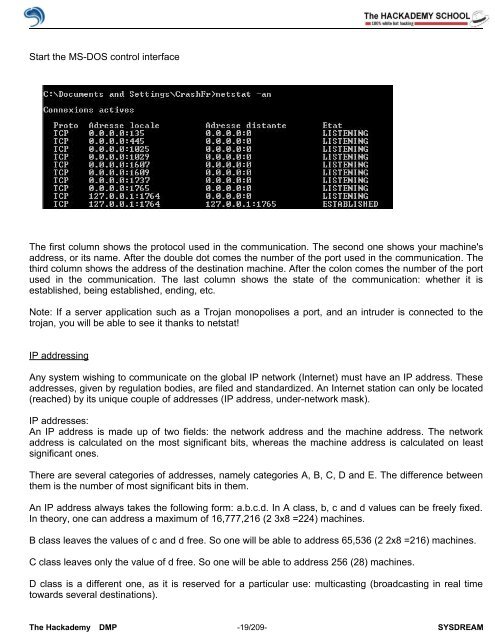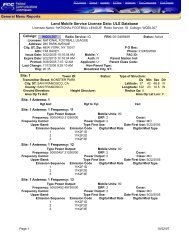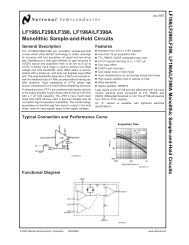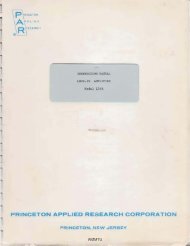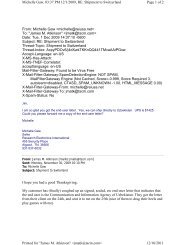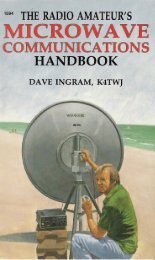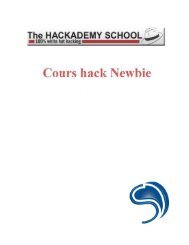Create successful ePaper yourself
Turn your PDF publications into a flip-book with our unique Google optimized e-Paper software.
Start the MS-DOS control interface<br />
The first column shows the protocol used in the communication. The second one shows your machine's<br />
address, or its name. After the double dot comes the number <strong>of</strong> the port used in the communication. The<br />
third column shows the address <strong>of</strong> the destination machine. After the colon comes the number <strong>of</strong> the port<br />
used in the communication. The last column shows the state <strong>of</strong> the communication: whether it is<br />
established, being established, ending, etc.<br />
Note: If a server application such as a Trojan monopolises a port, and an intruder is connected to the<br />
trojan, you will be able to see it thanks to netstat!<br />
IP addressing<br />
Any system wishing to communicate on the global IP network (Internet) must have an IP address. These<br />
addresses, given by regulation bodies, are filed and standardized. An Internet station can only be located<br />
(reached) by its unique couple <strong>of</strong> addresses (IP address, under-network mask).<br />
IP addresses:<br />
An IP address is made up <strong>of</strong> two fields: the network address and the machine address. The network<br />
address is calculated on the most significant bits, whereas the machine address is calculated on least<br />
significant ones.<br />
There are several categories <strong>of</strong> addresses, namely categories A, B, C, D and E. The difference between<br />
them is the number <strong>of</strong> most significant bits in them.<br />
An IP address always takes the following form: a.b.c.d. In A class, b, c and d values can be freely fixed.<br />
In theory, one can address a maximum <strong>of</strong> 16,777,216 (2 3x8 =224) machines.<br />
B class leaves the values <strong>of</strong> c and d free. So one will be able to address 65,536 (2 2x8 =216) machines.<br />
C class leaves only the value <strong>of</strong> d free. So one will be able to address 256 (28) machines.<br />
D class is a different one, as it is reserved for a particular use: multicasting (broadcasting in real time<br />
towards several destinations).<br />
The <strong>Hack</strong>ademy DMP -19/209- SYSDREAM


